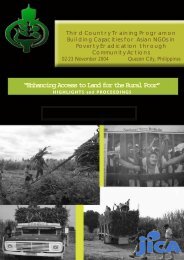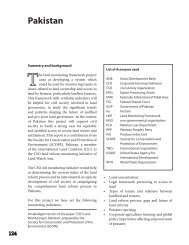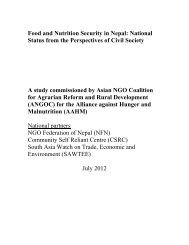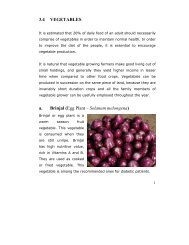Traditional Practices in Agriculture FULL - ANGOC Site
Traditional Practices in Agriculture FULL - ANGOC Site
Traditional Practices in Agriculture FULL - ANGOC Site
You also want an ePaper? Increase the reach of your titles
YUMPU automatically turns print PDFs into web optimized ePapers that Google loves.
8. After the harvest of tobacco leaves their stems and roots are<br />
ploughed <strong>in</strong> situ to control the termites.<br />
9. Tobacco soaked water is poured on the ant mounds to<br />
control them<br />
5.4 Rodent Control<br />
1. Rats do not live <strong>in</strong> fields where sheep penn<strong>in</strong>g is be<strong>in</strong>g<br />
practiced (Stray cattle menace also can be checked by sheep<br />
penn<strong>in</strong>g as cattle do not feed on / graze the lands after<br />
sheep penn<strong>in</strong>g, as the sheep ur<strong>in</strong>e drives them away from<br />
graz<strong>in</strong>g).<br />
2. Putt<strong>in</strong>g fresh cow dung on both the fields and bunds reduces<br />
rat problem.<br />
3. Put the branches of Thangarali (Tecoma stands) around the<br />
fields to control rats.<br />
4. To control rats <strong>in</strong> paddy fields Channampoo (Cycas<br />
cerc<strong>in</strong>alis) flowers are cut <strong>in</strong>to pieces and placed <strong>in</strong> many<br />
places whose bad odour drives away the rats.<br />
5. Plant<strong>in</strong>g closely Nochi (Vitex negundo) and Calotropis<br />
gigantean around the fields as a fence helps to control rat<br />
problem.
















